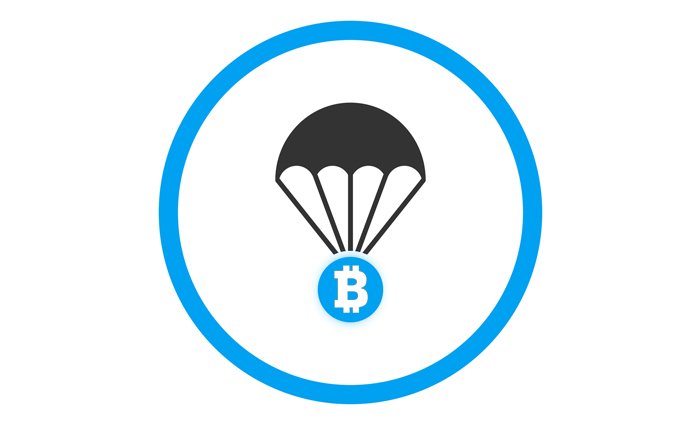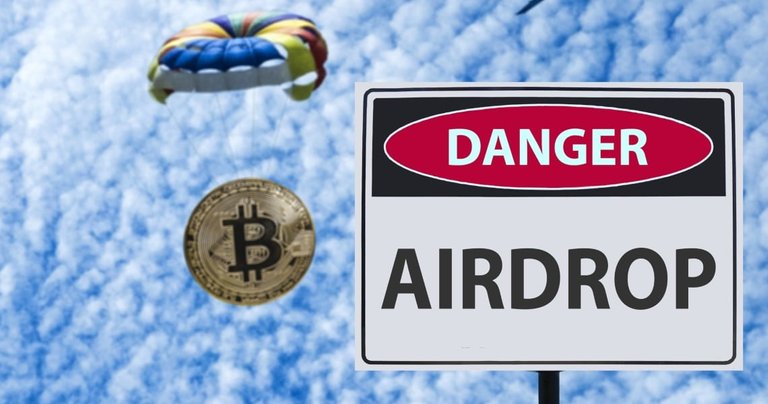Airdrops: Are they really worth your time?
‘Nothing is free in Freetown’; for some reasons, this is arguably true in the crypto space. Well, the cryptocurrency is fond of disproving normal beliefs. ‘Limitless’, the most suited definition of what cryptocurrency represents.
Sometimes this year, everyone who ever used the services of ethereum-based cryptocurrency token swap service – Uniswap, received a breathtaking 400 UNI, worth over $1200 at the time of distribution. If you are wondering what they did to deserve a thousand dollars…nothing! Yeah, nothing in the right sense.
‘An incentive for patronizing the Uniswap decentralized exchange’, still a vague explanation for that drop. The Uniswap airdrop changed the definition of airdrops and guess where else people received such amount for ‘free’? Déjà vu! The US government’s COVID relief fund was about 1200$. Trump might want to ask the guys at UNISWAP how best to do it! Uhm, Trumps’ relief fund reached a greater number of people though, and if you sold off your UNI tokens at $3, then you just got the exact amount Donald dished out to his citizens.
Money rains in the air, the Simpsons first predicted something similar, cryptocurrency only realized it. Despite the Uniswap airdrop being the biggest we have seen in recent times; airdrop is a tradition in the crypto space and a greater percentage of cryptocurrency enthusiast have once earned ‘free’ tokens in one way or another.
But as a matter of fact, airdrops are rarely (if ever) free and once again ‘nothing is free in Freetown’. Airdrops and bounties are the most popular cryptocurrency marketing schemes. Over the years, it has produced the best marketing results and the survival of altcoin projects is largely thanks to the concept airdrop.
Via airdrops and bounties, the participants are incentivized to promote a new or existing project. The idea of airdrop has been furnished over time to produce better results for projects employing this tactic to promote their project. Projects have successfully improved their online presence via airdrops. Trading competitions have also shown positive results and have helped projects improve their performance on exchanges. Simply put, incentivizing promotional activities have worked very much for cryptocurrency projects.
But can the participants of these programs say the same?
Personally, I have engaged in countless active airdrops and have also received a couple of tokens passively. The Uniswap airdrop didn’t work for me…still pains. However, having spent much time hunting for these ‘free’ crypto, it will be great to share a short story.
‘Hey! you’ll get X (number) of Y coin for sharing this tweet and tagging 5 friends then filling out the form below…and joining us on telegram’. My interest in airdrop grew after taking part in some airdrops which relatively paid off. Going deeper and getting more active in the practice made me realize just how hard free things takes to come around – if airdrops are even free in the real sense.
Printing a new ethereum token, creating a twitter profile and telegram community are pretty easy stuffs to do. Making promises to gullible cryptocurrency enthusiasts is even easier. But, creating a good use-case for a token to drive its value is the hardest part of building cryptocurrency projects.
New and existing projects are aware of the challenges involved in building authentic projects, hence many resort to doing the easiest parts and cashing in on them. Promises and propaganda, these are too good to be true but easily lure unsuspecting individuals. They are in fact, the biggest tools of new and existing projects striving to gain themselves a new audience. Depending on how tasty an airdrop sounds, projects gain thousands of new followers and could build a large community of hopeful followers in a matter of days. For authentic projects, this is just the beginning of the journey; for fraudulent project, the job is almost done.
While genuine projects go ahead to utilize the new crowd in promoting its agenda, fraudulent projects do same but for an agenda detrimental to the followers. Such projects could cash in on their current success by requiring fees from the airdrop participant to claim these tokens which are actually worthless. There are couple of ways fraudulent projects cash in on their fake airdrops. Projects that play it long go as far as listing on exchanges, building hypes and dumping on their investors.
Another popular story of airdrop participants is ‘received tokens which end up becoming prospects only’. These tokens were well received, for free, but they end up being valueless as the project in question never really had planed of building anything. While this may not be the intent of the project, hopeful enthusiasts who participated in this airdrop have only wasted their time.
The scope of this writing might not be enough to cover every airdrop mishap. But whenever any of them occurs, participants are left to nurse regrets from their wasted efforts and time. ‘Was it even worth it?’ You’ll struggle to answer this question when the ‘promising’ airdrop didn’t work as planned, especially when much time has been invested in running referral bounties. Many would argue that ‘it is free after all’, but depending on your flexibility with time, those cumulative hours could mean a lot.
Either way, the answer to this question will always be biased. Regardless of the fact that the percentage of genuine airdrops have reduced greatly over the years, many have made a successful entrance into cryptocurrency through airdrops while many have strengthened their portfolios via airdrops. As expected, only few can tell such story for sure.
Genuine airdrops are certainly worth your time. You will not only be a part of a bigger thing; you get a chance of investing your time only to have a share of what is to come from the success of the project. Detecting which is genuine is the hard nut to crack. Authenticity of new projects are even harder to verify, and new projects make up the bulk of airdrop and bounty programs.
Endeavour to take some time and research into the new project and how they hope to sustain the value of their project despite giving away a tangible amount of the token in airdrops and bounties. Bogus terms and unbelievable promises easily give away an incredible project and airdrop as well. Shady team members? Well, that’s my number one turn off for while making investment decisions and also while judging the credibility of any project. For new projects, it is important to consider the already available infrastructure. A project which already has a couple of products stands more chances of continuing developments after distributing free tokens and gaining new members. Projects which are yet to even have a good website is probably not one for the future.



very interesting post! All in all before any airdrop or to be for exact behind any crypto we need to do our research first
Posted Using LeoFinance Beta
True, amidst researches, weeding out the fake ones are still hard.
@tipu curate 2
Upvoted 👌 (Mana: 56/112) Liquid rewards.
yeah cryptos love to do the impossible.
but most airdrops are actually scam. Although I try to do as much as I can but if it involves me spending before partaking in the airdrop, I immediately pull out, in Nigeria we will say(I will immediately JAPA)....
I'm Nigerian too, so i clearly understand, lol.
It's always worth something for those who didn't expect anything, haha!
Yeah, but not always.
Hello @joelagbo
Airdrops are very popular, certainly, are a great form of marketing, although some end up having no value in the market, if you are lucky these tokens can acquire great value, and end up giving great mobility to markets
fact, but this is very rare. One out of a hundred...maybe.